2014 Ford Escape Vs. 2014 Hyundai Santa Fe Sport

Hyundai and Ford have been battling in the compact crossover (CUV) market for quite some time now. Ford first introduced the Escape in 2000 and Hyundai arrived to the party shortly after in 2004 with the near sub-compact Tucson.
To keep things fresh in a booming segment that’s witnessing an endless barrage of new offerings, Ford introduced an all-new Escape for the 2012 model year. Available in a wide range of configurations with three engine choices, Ford is positioning the Escape to appeal to a diverse crowd in an effort to bolster sales.
SEE ALSO: 2013 Ford Escape Review – Video
Hyundai is taking a similar approach through a different method. The company still offers the value driven, diminutive Tucson, but the Santa Fe Sport now joins it in a quest to win over compact crossover customers. Smaller than the regular Santa Fe, the Sport is better packaged, priced and positioned to take on the stalwarts of the compact CUV segment like the Honda CR-V, Toyota RAV4 and of course, the Ford Escape.
Get the Flash Player to see this player.
Upscale But Still Mainstream
Unlike a lot of other compact CUVs, the Escape Titanium and Santa Fe Sport Limited can be outfitted with power and equipment levels usually associated with more premium marques. The one thing neither the Ford nor Hyundai do include though is the price associated with a prestigious badge on the grille.
Considering both vehicles start at a base price in the mid-$20,000 range, getting a Santa Fe Sport Limited with the Tech package for $37,625 after destination charges or a Ford Escape Titanium 2.0L Ecoboost AWD for $37,925 may not seem like much of a deal. So what does one get for that price tag?
Two-Liter Turbos
Starting under the hood, both vehicles come with a turbocharged 2.0-liter four-cylinder engine. In the Ford it develops 240 HP and 270 lb-ft of torque while the Hyundai has a slight edge with 264 HP and 269 lb-ft of torque. The engines are each equipped to a six-speed automatic transmissions with the choice of front-wheel or all-wheel drive.
Even though the Escape is down on power compared to the Santa Fe Sport, it feels faster. More than that, the Ford’s drivetrain feels more refined and is smoother in operation than the Hyundai. Power, gear changes and braking all feel well sorted out in the Escape.
SEE ALSO: 2013 Hyundai Santa Fe Review – Video
In contrast, the Santa Fe Sport’s transmission isn’t really sharp and it’s likely programmed that way to provide more comfort and as much fuel efficiency as possible. There are a few interesting features found inside the Hyundai like the all-wheel drive lock mode and hill descent control. When properly equipped, both vehicles are rated to tow 3,500 lbs.
MPG Surprisingly Similar
Despite the AWD Escape weighing 63 lbs. more at a total weight of 3,769 lbs., it is actually rated to return much better fuel efficiency. With EPA ratings of 21 MPG in the city and 28 MPG on the highway, the Escape trumps the Santa Fe Sport by 3 MPG city and 4 MPG highway. But, during our real world testing, the gap shrank considerably with the Escape averaging 22.2 MPG compared to the Santa Fe Sport’s average of 22.0 MPG.
With such similar specs in power, transmissions, weight and fuel economy, it’s easy to assume the two crossovers drive alike. But they don’t. Ford designed the Escape Titanium to be a sporty crossover and it shows. The steering is weighted nicely and is very direct in its actions. In fact, you might find the steering too direct for a crossover because the Escape can feel a bit darty on the highway.
SEE ALSO: 2013-2014 Compact Crossover Shootout
In contrast, the Santa Fe Sport Limited has vague steering that sometimes adjusts steering effort at seemingly random times. At least the steering effort can be adjusted through three settings, but nothing really improves its precision.
Compare Specs
| Vehicle | 2014 Ford Escape | Advantage | 2014 Hyundai Santa Fe Sport |
|---|---|---|---|
| Engine | 2.0-liter turbo four cylinder | - | 2.0-liter turbo four cylinder |
| Horsepower | 240 hp | Santa Fe | 264 hp |
| Max. Torque | 270 lb-ft | - | 269 lb-ft |
| Fuel Economy | 21 MPG city / 28 MPG hwy | Escape | 18 MPG city / 24 MPG hwy |
| Observed MPG | 22.2 MPG | Escape | 22.0 MPG |
| Weight | 3,769 lbs. | Santa Fe | 3,709 lbs. |
| Front Legroom | 43.1” | Escape | 41.3” |
| Rear Legroom | 36.8” | Santa Fe | 39.4” |
| Cargo Capacity Rear Seats Up | 34.3 cu. ft. | Santa Fe | 35.4 cu. ft. |
| Cargo Capacity Rear Seats Down | 68.1 cu. ft. | Santa Fe | 71.5 cu. ft. |
| Starting Price | $23,505 | Escape | $25,825 |
| As Tested Price | $37,925 | - | $37,625 |
Sharp Handling vs. Comfortable Ride
Although both vehicles come equipped with 19-inch wheels, the Escape wears lower profile tires that aid in handling. It doesn’t quite have the responses of some higher priced machinery though and road noise in the Ford is worse than found in the Hyundai.
The Santa Fe Sport’s handling is bit on the soft side, which is perfect for those with families or who always have passengers in the car. Even if the Escape does offer an overall more premium driving experience, it’s obvious the Santa Fe Sport has been designed from the get-go with passengers in mind.
Spacious vs. Cramped
This is most evident in the back seat area of the Hyundai. The rear seats are heated and the windows are equipped with privacy shades and neither of those features are available on the Escape. Furthermore, the seatbacks recline quite a bit more in the Hyundai and the seats are set on rails for the optimal balance between passenger legroom and cargo space. This only adds to the Santa Fe’s practicality that already features nearly three more inches of rear legroom and an extra cubic foot of cargo space.
Up front the Escape is a bit of a mixed bag. The seats are incredibly comfortable and the leather feels richer than found in the Santa Fe Sport. The dashboard and doors also have richer looking materials, but the overall design is a cluttered mess. There are too many shapes, materials and finishes that create a feeling of claustrophobia in an already cramped interior.
The Escape does feature a power lift tail-gate unlike the Hyundai and an 112V plug. But, this nice materials and finishes found up front in the Escape are absent in the back as they’re replaced but chintzy hard plastics.
Options vs. Options
The materials in the Hyundai are a nice blend and the design of the cabin doesn’t give off the same cluttered feel as the Escape. The added Technology package includes a 550-watt Infinity sound system and an eight-inch touch-screen navigation system that we found much easier to operate than MyFord Touch. As well, the panoramic sunroof is far bigger than in the Escape and there are a few comfort features that the Ford doesn’t offer, like cooled seats and a heated steering wheel.
The Verdict
The answer to which vehicle is the better premium crossover comes down to personal priorities. The Escape offers a more refined driving experience and sportier appearance, while the Santa Fe Sport is the more comfortable and enjoyable place to be for all passengers. With compact crossovers core missions being all about transporting people and cargo, the Hyundai Santa Fe Sport is the better choice for those looking for a well-equipped compact crossover without the premium price.
2014 Ford Escape Titanium, 2014 Hyundai Santa Fe Sport Limited
LOVE IT
- Drivetrain refinement
- Handling
- Front seats
- Space
- Comfort
- Luxury features
LEAVE IT
- Rear seats
- Not as efficient as claimed
- Interior cluttered
- Steering
- Transmission’s lack of refinement
- Doesn’t feel as powerful as numbers suggest

A 20+ year industry veteran, Mike rejoins the AutoGuide team as the Managing Editor. He started his career at a young age working at dealerships, car rentals, and used car advertisers. He then found his true passion, automotive writing. After contributing to multiple websites for several years, he spent the next six years working at the head office of an automotive OEM, before returning back to the field he loves. He is a member of the Automobile Journalists Association of Canada (AJAC), and Midwest Automotive Media Association (MAMA). He's the recipient of a feature writing of the year award and multiple video of the year awards.
More by Mike Schlee
















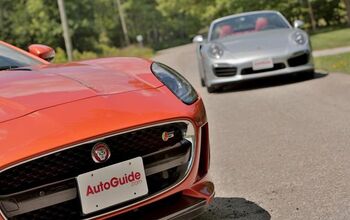
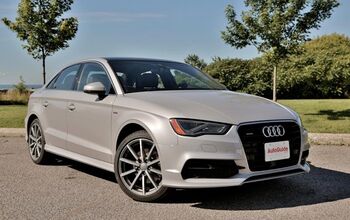
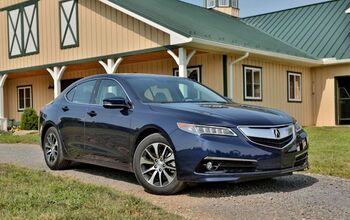

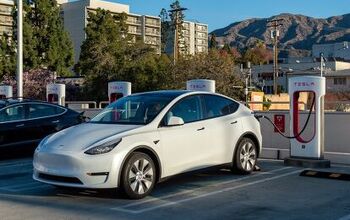




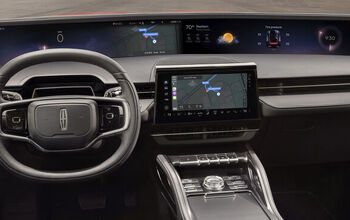

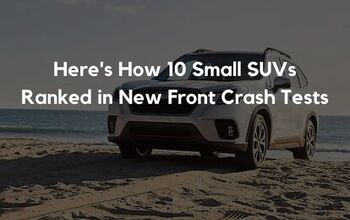
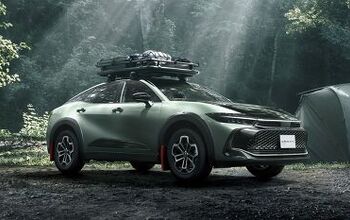

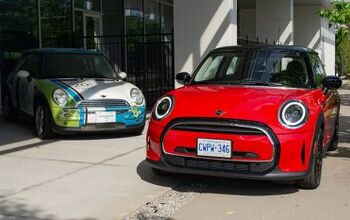
Comments
Join the conversation
keep buying those hyundai's!. thats what keeps me busy all day repairing them. All of these car rating sites keep giving hyundai better ratings than honda , ford and everytghing else. they forget to mention that the mechanical issues are horrible , stupid repairs and low km longevity. 1/2 my repairs are hyundai and kia.